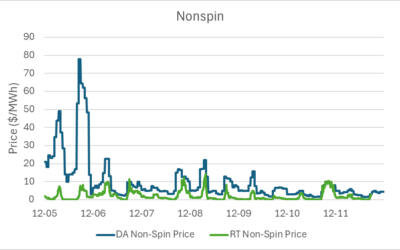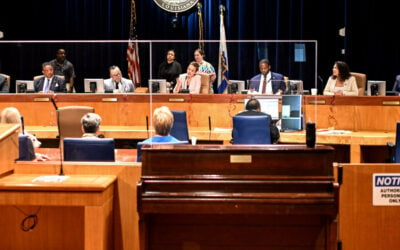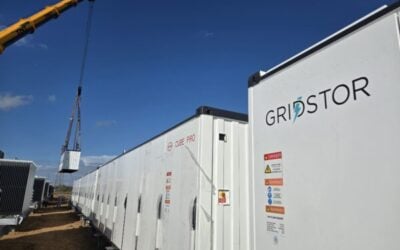UK energy and climate change minister Amber Rudd visits the ‘Big Battery’, a grid-stabilising pilot project, last year. Image: Younicos.
Energy storage can become a “significant” component for future balancing of the UK’s National Grid electricity network, but must overcome policy challenges if it is to realise its potential.
Those findings, published today in this year’s edition of the National Grid’s Future Energy Scenario study, coincide with renewed industry calls for policy and potential subsidy support for storage with a number of products emerging later this year to test the market’s waters.
The study states that while the UK Department for Energy and Climate Change (DECC) has granted some £56 million (US$87.3 million) in support under its innovation programme, the absence of a regulatory definition for storage has created legal uncertainties for ownership and operation of storage for business models.
However the report stresses throughout that while storage is unlikely to be the “single solution” for grid stability and frequency response issues, there is an unquestionable need for it that will only increase in the future.
Try Premium for just $1
- Full premium access for the first month at only $1
- Converts to an annual rate after 30 days unless cancelled
- Cancel anytime during the trial period
Premium Benefits
- Expert industry analysis and interviews
- Digital access to PV Tech Power journal
- Exclusive event discounts
Or get the full Premium subscription right away
Or continue reading this article for free
“The question is not whether there is a system need, but rather whether storage can provide a cost-effective solution to that need. Whilst storage technologies have the potential to assist with system operability and constraint management, services must be met by the most economic option,” the report states.
National Grid found that cost competitiveness for storage could be achieved through a number of routes and argued that in order for storage to “unlock its potential” only one or two developments would need to be realised, listing them as legislation recognising storage as a separate entity, targeted policy support for early adopters, the introduction of time of use tariffs to encourage self-consumption and continued cost reductions.
The report has triggered responses from the industry, many of which call on the government to extend subsidy support to energy storage. “It is essential that the government adopts new technologies to solve these ongoing grid problems, both to prevent increasing bills for consumers and to provide energy security,” said James Court, head of external affairs at the Renewable Energy Association.
And Finlay Colville, head of intelligence at Solar Media, said: “The report quite rightly flags two key issues, regardless of the current solar figure and the scenario chosen – daytime solar generation and the potential of storage. By 2020, how much supply in the UK is coming from solar during daytime and how much storage has become mainstream will be a fascinating read in the 2020 report release.”
The calls for support are however nothing new. Former UK Electricity Storage Association director Anthony Price argued in May this year that the UK was lagging behind other countries in storage investment and called on DECC to do more for the technology, while prior to the country’s general election in May, Phil Taylor, professor of electrical power systems and director of the Institute for Sustainability at Newcastle University, said the next government would need to give storage “its own asset class with accompanying rules for appropriate regulatory treatment”.
“
…the report stresses throughout that while storage is unlikely to be the “single solution” for grid stability and frequency response issues, there is an unquestionable need for it that will only increase in the future.”





